By Herb Moering
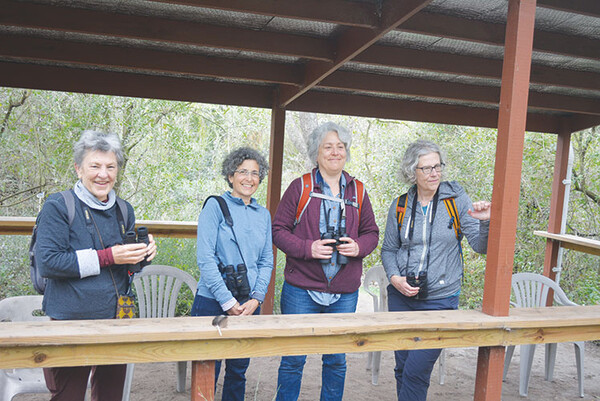 Bird watchers have many opportunities to follow their hobby, including the World Birding Center (WBC) network of nine different sites set along a 120-mile historic trail in the Rio Grande Valley. It is a $20 million development based on a partnership between the Texas Parks & Wildlife Department, U.S. Fish & Wildlife Service and Rio Grande Valley communities.
Bird watchers have many opportunities to follow their hobby, including the World Birding Center (WBC) network of nine different sites set along a 120-mile historic trail in the Rio Grande Valley. It is a $20 million development based on a partnership between the Texas Parks & Wildlife Department, U.S. Fish & Wildlife Service and Rio Grande Valley communities.
The nine sites vary dramatically in landscape, but all serve as home at times for more than 500 species of birds. This area serves as two major migratory corridors with many of the birds found at Bentsen RGV Park in Mission, Edinburg Scenic Wetlands, Estro Llano Grande in Weslaco, Harlingen Arroyo Colorado, Quinta Mazatlán in McAllen, Resaca de la Palma in Brownsville, Roma Bluffs, South Padre Island Birding and Nature Center and the unique Old Hidalgo Pumphouse.
 Old Hidalgo Pumphouse
Old Hidalgo Pumphouse
Going to the Old City of Hidalgo Pumphouse is a little like having the winning trifecta ticket at the track. Not only does one visit the first of the nine WBC sites, but there’s the intriguing story surrounding the Pumphouse’s importance to agriculture, plus a glimpse back to when model railroading was of interest to many kids.
There’s also a 4.5-mile round trip biking and walking trail. Bikers are likely to not only see Kiskadees, Kingfishers, cardinals, hummingbirds, and pelicans, but also an occasional Border Patrol and National Guard member.
Winter Texans Steve and Sharon Warren walked the grounds, who had come from Palm Shadows RV Park in Donna, where the South Dakota couple have been staying since 2017. Her husband said Sharon’s birding now includes a list of 464 different species she has seen. The latest they saw was the rare Bat Falcon, seen for the first in the U.S. at the Santa Ana Wildlife Refuge recently.
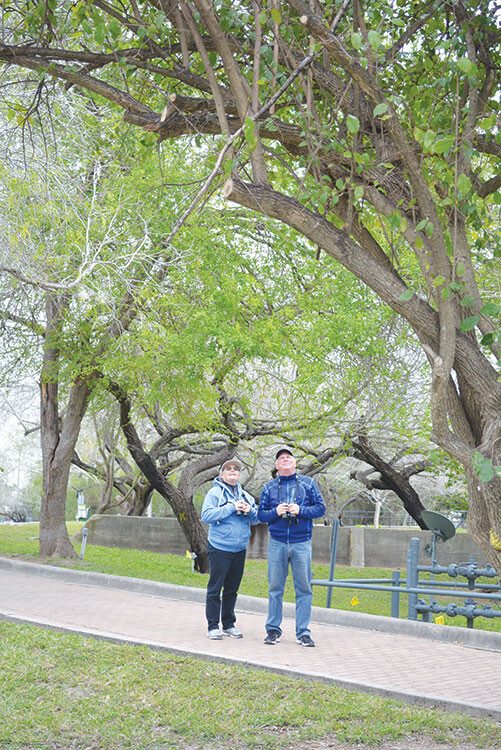 Visitors have a choice of touring the WBC grounds and Pumphouse Museum on their own or can make a reservation for a trolley ride on any weekday, according to Melissa Sanchez, pumphouse director, with capacity for 40 people. The phone number is (956) 843-8686.
Visitors have a choice of touring the WBC grounds and Pumphouse Museum on their own or can make a reservation for a trolley ride on any weekday, according to Melissa Sanchez, pumphouse director, with capacity for 40 people. The phone number is (956) 843-8686.
The latest tour was for residents of San Juan Gardens Park. Because of the large number who came, visitors were split with half going on the trolley ride and the other half given a tour of the museum., which was later reversed.
Depending upon the weather, the trolley tour can include going to the river and seeing the station that was built a half-mile away in the early ‘80s with 10 electric pumps. The old steam powered pumphouse, abandoned in 1983, was put into operation at the start of the 20th Century, making this a “Magic Valley” by turning Hidalgo County into a year-round agricultural powerhouse.
The hurricane of 1933 shifted the Rio Grande River a half-mile away from the pumphouse, requiring the digging of a canal to the river. Initially there were just two pumps installed in 1909 in the old pumphouse with others added over the years to send water to farm fields and cities via irrigation canals. Total pumping capacity reached 408,000 gallons a minute, fast enough to fill an Olympic-size pool in 20 seconds. All of the pumps are there for viewing.
A bonus is a look at the RGV Rails Club’s model train layout that is spread over a large area of a Pumphouse lower floor, not far from the large pumps. If you come any Wednesday between 10 a.m. and noon, one will find Red Knepfler at the controls of the trains or working on maintenance.
The head of the Rio Grande Valley Rails Club is inviting any model railroader to bring their HO scale trains and run them around the extensive layout, which has been at the museum for some 20 years. Knepfler, who is a year-round resident of Mission West Resort, can be reached at (313) 532-8549. The trainman said he has about 150 cars of rolling stock of his own, which include many tobacco and whiskey labeled cars as well as corporate general commodity cars.
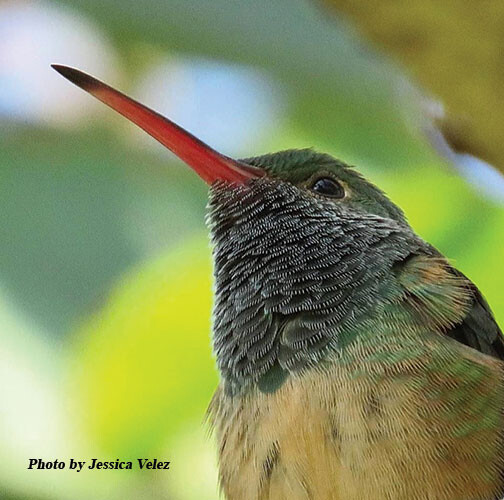 Red, who is originally from Michigan, loves to see visitors, like his friend Larry Wolf, from Missouri, living at Enchanted Valley Ranch in Palmview. Wolf said he came to lend some encouragement and a little help to Red, who doesn’t see club members very often. Most visitors are Winter Texans, who like to recall a bit of their youth.
Red, who is originally from Michigan, loves to see visitors, like his friend Larry Wolf, from Missouri, living at Enchanted Valley Ranch in Palmview. Wolf said he came to lend some encouragement and a little help to Red, who doesn’t see club members very often. Most visitors are Winter Texans, who like to recall a bit of their youth.
He’s thankful too for the museum allowing the model trains to be displayed, which was the only place he found large enough for the setup, which include small towns, a city, and a RR round house.
With the migratory season getting under way, Sanchez is expecting the number of visitors to increase significantly. The Pumphouse Museum is open from 8 a.m. to 7 p.m. Monday through Friday, 10 a.m. to 7 p.m. on the weekend.
 Frontera Audubon
Frontera Audubon
A contrast exists between the noisy traffic on South Texas Boulevard in Weslaco and the tranquil Frontera Audubon Nature Sanctuary a mere hundred yards away. The 15-acre nature preserve near the heart of the city provides a haven for birds, butterflies and other small wildlife thriving among the Tamaulipan, thorn scrub and hackberry forest.
To be found there is the “Thicket,” an orchard butterfly garden, wetlands, and ponds. The site houses a visitor center and the Texas historic landmark—the Skaggs House. The Spanish Mediterranean style house was built in 1927 for early Weslaco residents C.L. “Lester” and Florence R. Skaggs, who were bankers and citrus growers. Their daughter, Bebe Skaggs James, donated the property to Frontera Audubon in 1992 for conservation and preservation.
The nature sanctuary developed in 1989 from an abandoned grapefruit orchard, a lot of Guinea grass, mesquite woods and dense stands of Brazilian pepper in a wet area, owned by Jim and Cyndy Chapman. The site was a magnet for birds and fireflies. The Chapmans created what became known as the “Thicket” with native brush and tree seedlings.
The enjoyment of the site hit a roadblock when the city cited the site as a weedy lot ordinance violation. That led to a citizen effort to draft a habitat ordinance, which the city passed, giving Weslaco its first wildlife area. A half-acre land donation followed and then the Skaggs House donation. A non-profit organization established in the late 70s began operating at the site in 2000.
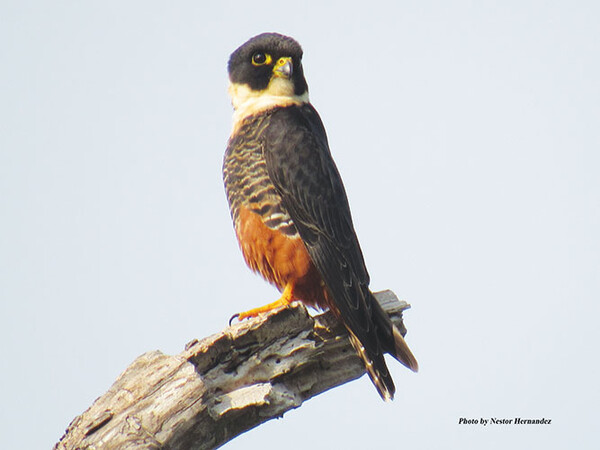 Because the house is undergoing renovations, the only way to see the inside is by booking a special event, according to program coordinator Alicesen Lopez. It should reopen by year’s end.
Because the house is undergoing renovations, the only way to see the inside is by booking a special event, according to program coordinator Alicesen Lopez. It should reopen by year’s end.
But the Thicket and its 1.5 miles of trails with its viewing stations and marshy areas are open Tuesday through Saturday from 8 a.m. to 4 p.m., Sunday noon to 4 p.m. and closed Monday. Weekly bird walks are held at 9 a.m. on Wednesdays, along with a yoga class on Thursdays.
The one very evident bird is the large turkey vulture that fly overhead or sit high in the treetops, which Lopez said will soon be migrating out of the sanctuary. But the most excitement came from four visiting women, who saw a Ringed Kingfisher, a rather large 16-inch in size on one of the trails.
The foursome of Gina Albano and Shirley Tomasello, both of Cleveland, OH and Kite Richert and Barbara Szombatfulvy, both from Durham, NC, had planned to visit South Texas two years ago, until the pandemic hit.
Tomasello and Szombatfulv, who have been friends for 47 years, planned this winter’s trip, choosing to stay at an Airbnb in McAllen on Lake Concepcion.
Walking the trails also offers an introduction to many of the trees and plants, which are identified. At the visitor center, there are weekly postings of birds that were sighted in the sanctuary.
While the weather has had an impact on the lower number of visitors, Lopez anticipates the approaching migratory season will have them busy over the next several weeks.
Admission to the park is $5 for adults, $4 for seniors, $3 for older students and children free. More information is on the center’s website or by calling (956) 968-3275.
Edinburg Scenic Wetlands
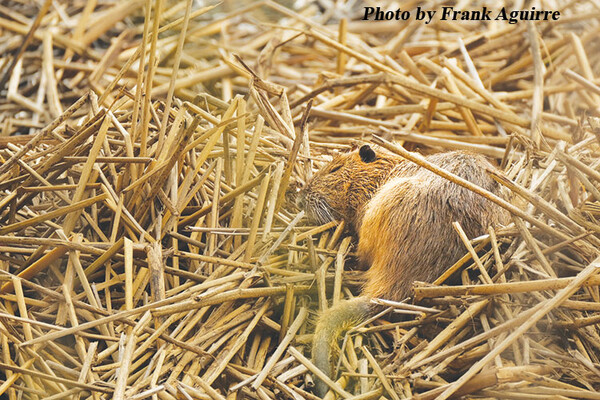 Many first-time and expert bird watchers find the 40-acre World Birding Center (WBC) in the City of Edinburg Municipal Park’s Scenic Wetlands an inviting, tranquil habitat. Karen Goodger, an avid “birder” and first-time visitor to the “Valley” from Katy, TX, went on the center’s bird walk March 10.
Many first-time and expert bird watchers find the 40-acre World Birding Center (WBC) in the City of Edinburg Municipal Park’s Scenic Wetlands an inviting, tranquil habitat. Karen Goodger, an avid “birder” and first-time visitor to the “Valley” from Katy, TX, went on the center’s bird walk March 10.
City employee David Flores led the walk on part of the 2.5 miles of trail, introducing the visitors, who also included Dave and Judy Lund, Anne Dare and Cindy Karman, first to the egrets, herons, cormorants and pelicans in the wetlands main pond. At least 13 different species of ducks can be found in the ponds and lagoons. Flores noted that the Purple Martins had arrived recently in another area of the park.
The Lunds came to the “Valley” in 2017 after Hurricane Harvey pushed them out of Port Aransas. The Winter Texan couple, who come from Wisconsin and stay at Ranchero Village in Weslaco, like “birding” and Dave has become a very good wildlife photographer following retirement. Karman lives in the same park as the Lunds, while Dare is at Country Sunshine in Weslaco.
Goodger wanted to see a Green Jay, which Flores was able to locate for her. She has been bird watching for a couple of years and has compiled an extensive list from around the Houston area. On her short trip here, she had logged 13 new species.
Brandon Alaniz, the new park manager, noted there are projects underway to spruce up the scenic wetlands and birding center as March of 2023 will mark the 20th anniversary of its establishment.
The center and wetlands in the municipal park that is nestled near the heart of the city also features a 3.5-acre butterfly garden. While the birds flitted about during the walk, the butterflies remained at rest, which to be seen requires warm weather conditions. The birds and butterflies are augmented with dragonfly and wildflower walks and even some nighttime excursions. The center offers nature tours, school field trips, family programs and special events.
Learning about nature is offered through outdoor classroom and programs at the Visitor/Interpretive Center. The center features educational exhibits on fish and aquatic life, and interactive programs highlight birds and butterflies. Telescopes and audio stations allow for closer inspection of the park’s inhabitants, while floor to ceiling windows provide watching of wildlife in every season.
To learn more check the Scenic Wetlands website or call (956) 381-9922.
There is also a community/children’s garden that offers its own education about native plants. A Junior Master Gardeners program is open to youth from six to 12 years of age, according to Director Hannah Marble, which runs February through June. Volunteers 16 and older are welcome to come on Thursdays and Saturdays from 8 a.m. to noon to learn about plants while helping in the garden. Simply call Marble at the Center.
The Center is open from 8 a.m. to 5 p.m. Monday through Thursday and 9 a.m. to 6 p.m. on Friday and Saturday and closed Sunday. WBC grounds are open daily from sunrise to sunset. Admission is $3 for adults and $2 for seniors and children.
To learn more about all of the World Birding Centers, visit their main website at www.theworldbirdingcenter.com.













